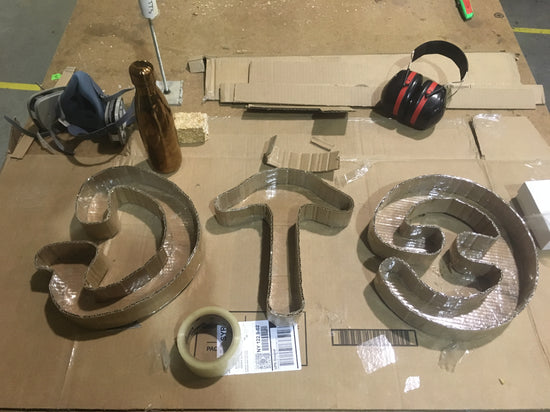
Waste is a human invention. It could be argued that the concept of waste may have been developed 10-12 thousand years ago with the advent of agricultural surpluses. But it’s really only been in the past 100 years or so that the concept of waste has been doing serious damage. That’s because we’ve now invented materials, like plastics, that just don’t exist in nature. Plastics aren’t compatible with planet Earth.
In nature, there is no waste. Everything is food for something else. Tree “waste” (aka leaves) feed bugs and mushrooms, which feed animals, and animal “waste” fertilizes the trees (and also feeds bugs and mushrooms). But today, we humans are increasingly reliant on materials like plastic that don’t fit into natural systems. Plastics are clogging our landfills, and poisoning marine life. These materials take many many lifetimes to break down. Frankly, we don’t really know how long it takes for plastic to break down, because it hasn’t happened yet. We’re starting to see signs of biological life evolving to recognize these techno-materials as food, but the evolutionary process can’t keep up with our generation of waste.
A lot of effort has gone into tweaking plastics to be compostable, and to be food for something in nature. Today you can find water bottles and chip bags made of bioplastics like PLA. If you put them in your home compost pile, you’ll likely be disappointed; even months later it will look the same. The reality is that many of these new bioplastics, including PLA, only break down at the very hot temperatures (160 F+) that are seen in industrial composting facilities. It’s rare for temperatures to ever get that hot in a home composter, or in a forest. With the advent of these new compostable bioplastics, industrial composting facilities have had to become very defensive to prevent items that won’t break down, and that often look the same, from contaminating their final product. Nobody likes to find a plastic spoon in the compost they spread on their garden.
To indicate what materials will break down in an industrial composting facility, standards like the Biodegradable Products Institute (BPI) seal are now found on many compostable products. It certifies that products meet the ASTM test standards that are designed to simulate industrial composting conditions. Believe it or not, there currently isn’t an official US standard for testing home (or natural) composting. Mushroom® Packaging has passed all the tests and has been BPI Certified. If your city has compost collection, you can toss Mushroom® Packaging parts in your compost collection container. Instead of ending up in a landfill, your packaging will become food for plants.
For natural products, like sticks and banana peels, there is no US label of certification. Obviously, these products will break down naturally in a home compost pile or tumbler. The beauty of Mushroom® Packaging, is that it too will break down naturally, at low temperatures at home. It’s made of materials that grow on farms and in forests, and there’s nothing artificial about it.
From the earth, to the earth… and that makes us feel good. We Ecovators have done a lot of experimentation with home composting Mushroom® Packaging parts on productive home gardens, and we’ve also taken some fun field trips to some of the largest industrial composting operations. Stay tuned for a series of upcoming posts about the science, and the big juicy vegetables that have resulted from our compost trials.
- Sam Harrington




